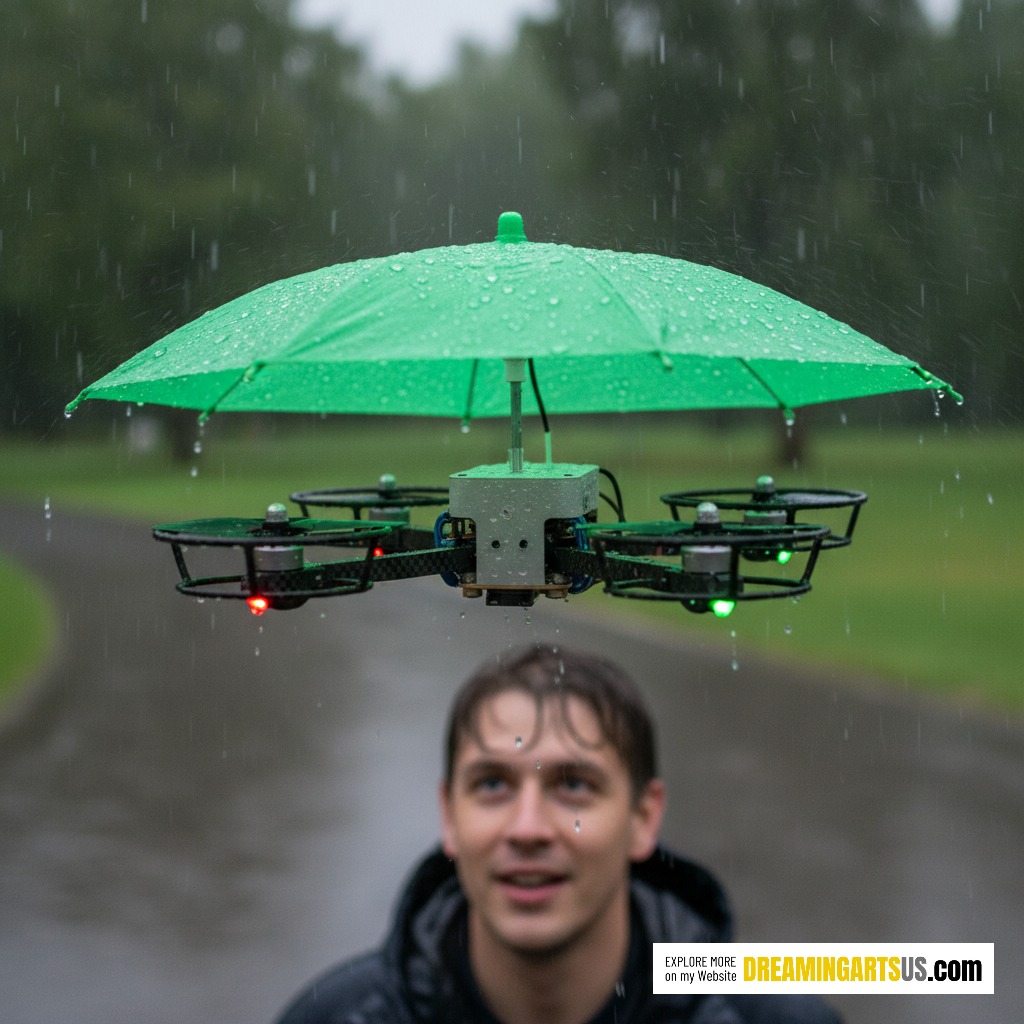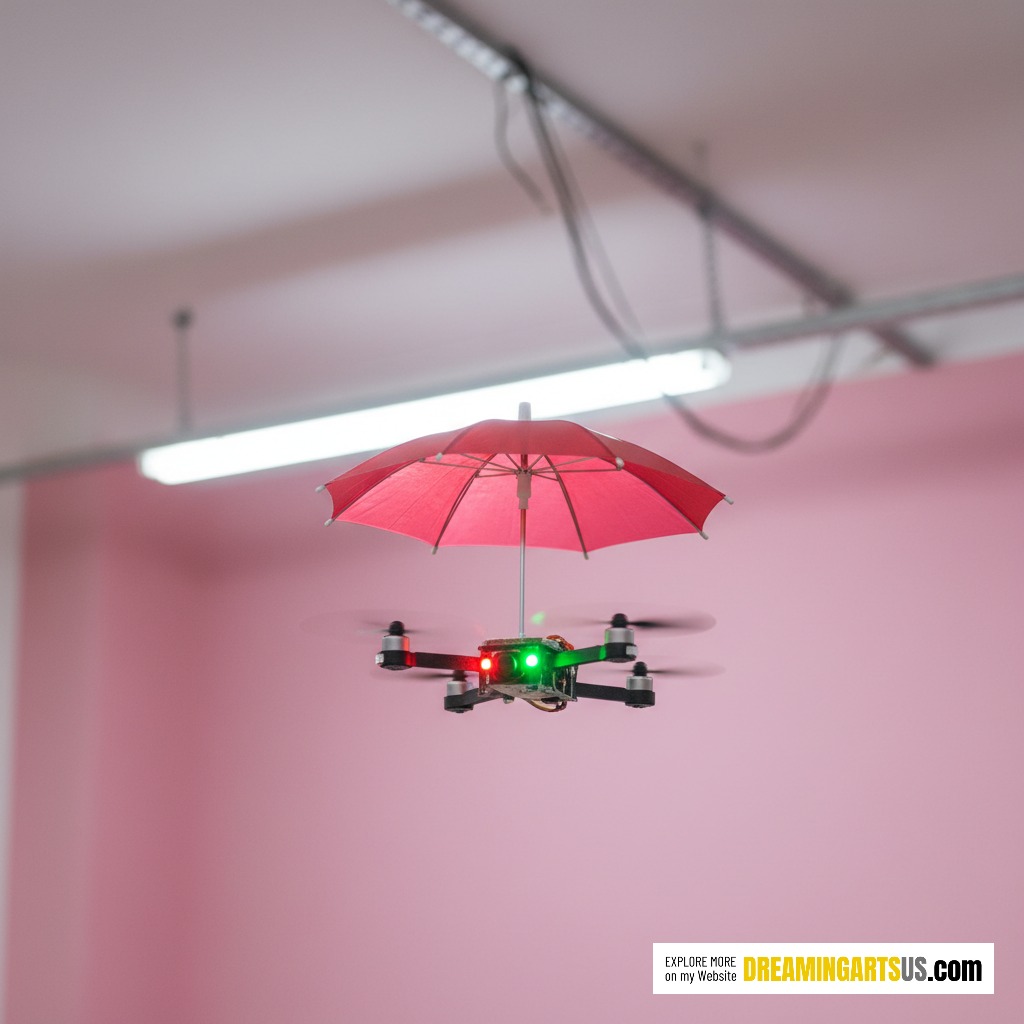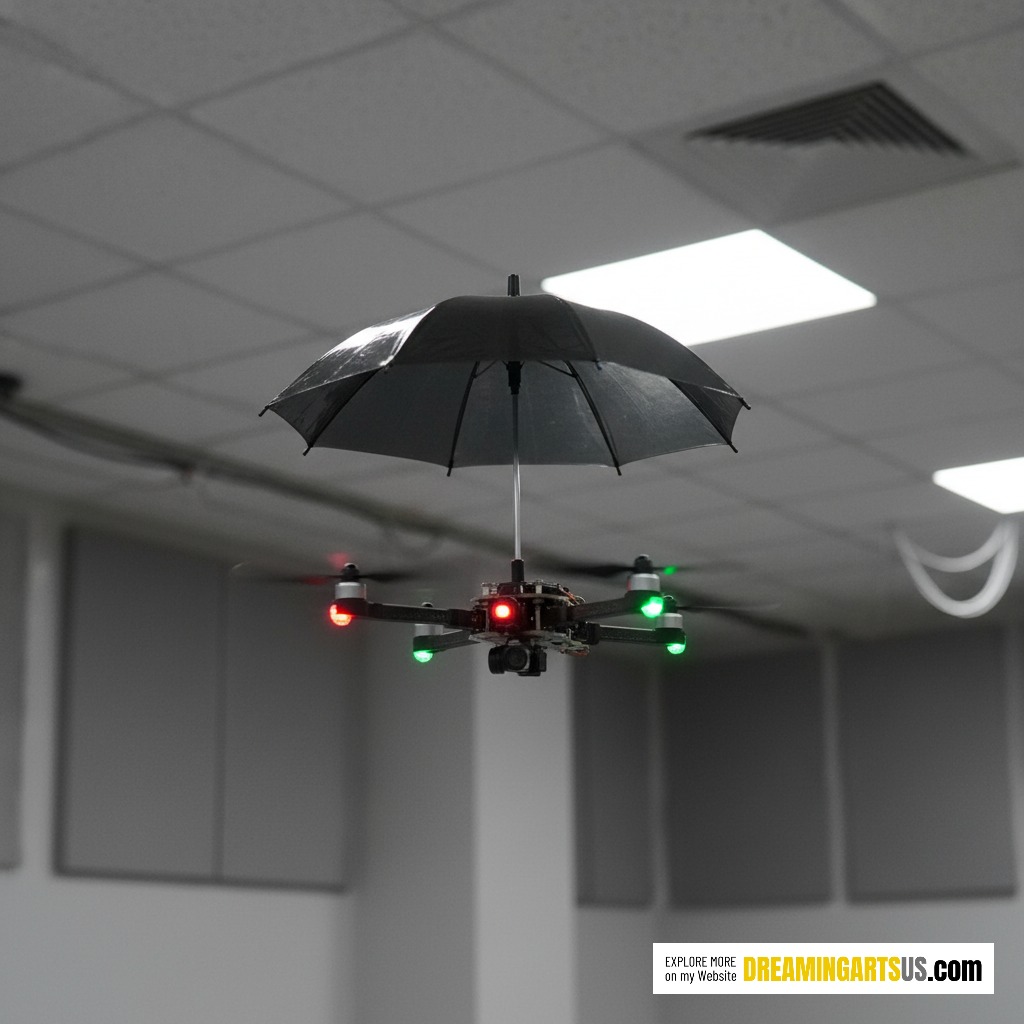When the sky opens up, most of us juggle three things at once: a bag, a phone, and an umbrella that catches wind like a parachute. Now imagine stepping out into the rain with both hands free—no handle to grip, no canopy to angle, and no awkward shoulder hunch. That’s the promise of Umbrella Drones: a compact flying assistant that hovers above you and keeps you dry while you walk, run, or even cycle at a leisurely pace. It sounds futuristic, but the engineering is refreshingly practical, and the daily benefits are obvious the moment you feel raindrops hit the canopy instead of your face.
This guide digs into how Umbrella Drones work, why they’re catching on, what to look for before buying, where they shine (and where they don’t), plus safety, etiquette, and maintenance tips so you can stay dry without becoming “that person” in the rain.

What Exactly Are Umbrella Drones?
Umbrella Drones are small multirotor aircraft—usually quadcopters—with a lightweight canopy mounted above the flight deck. Using onboard sensors and computer vision, they track their user and maintain a fixed position overhead, acting as a floating umbrella that follows you as you move. Think of it as a self-flying rain shield with smarts:
-
Autonomous tracking: The drone locks onto your position using visual tracking, GPS, Bluetooth beacons, or a combination of those signals.
-
Stabilized canopy: The umbrella canopy is attached to a damped mast or gimbal so it stays level even when the aircraft adjusts for wind.
-
Weather-ready frame: Prop guards, splash-resistant motors, conformal-coated electronics, and drainage channels keep the craft safe in light to moderate rain.
-
Smart flight logic: The drone maintains altitude and lateral offset to keep runoff off your shoulders, reacting to gusts and avoiding obstacles.
In short, Umbrella Drones fuse a common umbrella with the autonomy and stability tech of consumer drones, turning rain protection into a hands-free service.
Why People Want Them: Real-World Benefits
Two free hands. Text, carry groceries, hold a child’s hand, or walk the dog without fighting a slippery handle.
Better coverage angle. Because the canopy can sit a touch higher and center precisely over you, you often get drier shoulders than with a hand-held umbrella—especially while moving.
No more “wind flip.” The canopy mount and flight controller compensate for micro-gusts faster than human wrists can.
Accessibility boost. For users with limited arm mobility or those using crutches, Umbrella Drones remove a genuine pain point.
Commute flow. Steps, turnstiles, and bike racks become easier when you aren’t collapsing and reopening an umbrella every 30 seconds.

How Umbrella Drones Work (Without the Jargon Overload)
Lock on: You start the drone and pair it to a small tag or your phone. The craft lifts to head height (usually 1.8–2.2 m) and centers its canopy over your predicted position.
Track and predict: Cameras and sensors continuously estimate where you’ll be a fraction of a second from now. That’s how the canopy doesn’t lag behind you at every step.
Stabilize the cover: A gimbal or damped mast keeps the umbrella disk level while the drone makes micro-corrections for wind and your motion.
Manage rain and wind: Motors and props are selected for torque at lower RPMs, which helps hover stability. Splash-resistant housings and coatings protect the electronics.
Fail-safe: If battery gets low or the system loses tracking, the drone warns you, moves down and forward, and either lands at a safe spot or transitions to “follow at a distance” until you acknowledge.
Where Umbrella Drones Shine (And Where They Don’t)
Great for:
-
City sidewalks, campus walks, and park paths
-
Walks with dogs or kids when you need two hands
-
Outdoor queues and event ingress/egress
-
Light cycling or scooter commutes at very low speed
-
Photographers, delivery staff, or market vendors who need gear access in drizzle
Not ideal for:
-
Stadiums or dense crowds with overhead restrictions
-
Heavy storms, lightning, or high winds (above manufacturer limits)
-
Environments with strict “no-drone” rules (airports, certain civic zones)
The Anatomy of a Good Umbrella Drone
When you compare models, look past the headline flight time and study the pieces that actually keep you dry and safe:
-
Canopy design: 70–95 cm diameter is the sweet spot—large enough to shed rain, small enough for airflow. Vented or double-canopy designs reduce buffeting. Water-repellent fabrics or coated transparent film can cut weight.
-
Prop guards and shrouds: Full-ring guards are a must near face height. Some models use ducted fans for extra safety and efficiency.
-
Sensor stack: Vision cameras (RGB + depth) with obstacle sensing fore/aft, plus downward sensors for altitude. UWB or BLE beacons help in low-visibility.
-
Noise profile: Larger, slower-turn props are quieter and less “whiny.” Look for sub-60 dB at 1 m if you want a conversation-friendly hover.
-
Battery and hot-swap: 15–25 minutes is common. Hot-swappable packs and a pocket charger make the difference between novelty and daily utility.
-
Ingress protection: Marketing terms aside, you want splash resistance across the ESCs, motors, and ports; conformal coating on boards; and sealed seams.
-
Control options: One-button lift/land, emergency tether mode (some include a retractable micro-line), “park” hover, and “shoulder offset” settings for crosswind days.

Safety, Etiquette, and Local Rules
Umbrella Drones share air with people at close range, so safety isn’t optional:
-
Know your local drone laws. Many cities allow hobby drones below a height limit, outside no-fly zones, and within visual line of sight. Some require registration. Always check before your first rainy walk.
-
Keep a respectful bubble. Maintain at least 1.5–2 m from others’ heads and avoid hovering near entrances or bus doors.
-
Mind ceilings and trees. Droplets collect on leaves and overhead structures; your drone needs overhead clearance to avoid ricocheting rain into the props.
-
Use prop guards—always. Non-negotiable for sidewalk operation.
-
Pack a micro-towel. Wipe the canopy after flights so water doesn’t drip when you step indoors.
-
Have a plan B. A compact foldable hand umbrella in your bag is smart in case of sudden high winds or a low-battery warning.
Using Umbrella Drones Day to Day
1) Quick commute mode
Check battery > power on > auto takeoff.
Select “walk pace.” The drone will sit ~0.5 m ahead and 0.5–0.8 m above your head, angled to drain water away from your shoulders.
At crosswalks, tap “park” so it hovers slightly higher and forward while you look both ways.
2) Dog-walk mode
Use a side offset so the canopy drains away from the leash hand.
If your dog jumps, the tracking should follow you—not the leash motion—so ensure “human-center” tracking is selected.
3) Camera-friendly mode
Some Umbrella Drones include a tiny downward camera. Turn on the “content mode” to record stabilized walk-and-talk shots in the rain. Always respect privacy in public spaces.
4) Light cycling
Limit to slow speeds per the manual. Set a forward offset and lower altitude so the canopy centers when you lean slightly.
Refer to buy similar products: Click here
Maintenance That Actually Matters
Dry the electronics. After each rainy flight, remove the battery, open any water-drain flaps, and air-dry.
Rinse road grime. A quick distilled-water wipe keeps salt and grime from building up on the canopy and guards.
Balance props. If you hear a new vibration, check for nicked blades—imbalance reduces stability in gusts.
Update firmware. Tracking and obstacle avoidance gets noticeably better with updates.
Battery care. Don’t store fully dead or fully charged; 40–60% is a good shelf window.

Cost, Value, and Ownership Math
Entry level: You’ll find concept-style Umbrella Drones around the price of mid-range consumer drones. They tend to be louder and have shorter flight times but are great for short commutes.
Mid-range: Better tracking, quieter props, vented canopies, and improved splash resistance. This tier is the practical sweet spot for daily users.
Premium: Ducted-fan designs, near-whisper hover, superior IP sealing, and smart beacons for robust tracking in poor visibility. If you plan to rely on it in real weather, this is where durability lives.
Consider the “rainy-day ROI”: if you save even 10 minutes per wet commute—not to mention stress—you’ll feel the value quickly. And yes, there’s undeniable style points in showing up bone-dry while others shake out umbrellas at the door.
Frequently Asked Questions About Umbrella Drones
Do they work in strong wind?
Most Umbrella Drones are rated for light to moderate wind—think gusts you’d still tolerate with a quality handheld umbrella. Above that, flight controllers get busy, battery drains faster, and safety margins shrink. If the forecast screams “gale,” grab a traditional canopy.
What about noise?
Modern designs with larger props at lower RPMs are surprisingly polite. Premium models with ducted fans take it down another notch. If you plan to hold phone calls under the canopy, pick a model advertised for sub-60 dB hover.
Will I get odd looks?
At first, sure—and then envy when others realize you’re texting with dry hands. The practicality sells itself on a wet Monday morning.
Is the water from the canopy going to blow onto me?
Good models angle the canopy and maintain a small forward offset so runoff falls ahead—not onto your collar. Vented canopies help in gusts.
Are they legal to use on sidewalks?
That depends on local regulations. Many places allow small drones with restrictions on altitude, proximity, and sensitive areas. Check the rules and register if required. Always maintain line of sight and keep clear of crowds.
How long do the batteries last in the rain?
Rain adds a little aerodynamic drag but not much. Expect real-world runtimes of 15–25 minutes per pack, depending on canopy size, wind, and how much you move.
Can I use them at night?
Yes—with caution. Choose a model with good low-light tracking and add visibility lighting. Watch for reflections on wet pavement that can confuse pure visual tracking; that’s where beacon-assisted tracking shines.
What if the battery runs low mid-walk?
You’ll get a beep and app alert. Most Umbrella Drones offer an auto-land that moves safely to your side before touching down. Keep a small foldable umbrella in your bag for rare cases when you’re far from shelter.
Under the raindrops, you realize something simple: staying dry shouldn’t cost you the use of your hands. Umbrella Drones turn a clumsy, one-handed ritual into a smooth, autonomous convenience. They don’t try to replace the classic umbrella in hurricane winds or crowded venues—they give you a smarter option for the daily drizzle that slows everyone down.
If you’re ready to try one, prioritize quiet hover, reliable tracking, a vented canopy, full prop guards, and splash-resistant internals. Learn the local rules, practice good sidewalk etiquette, and carry a backup foldable for gnarly weather. Do that, and you’ll join the early crowd who arrives at the door dry, unflustered, and—best of all—hands free.
Rain happens. With Umbrella Drones, you just keep moving.


